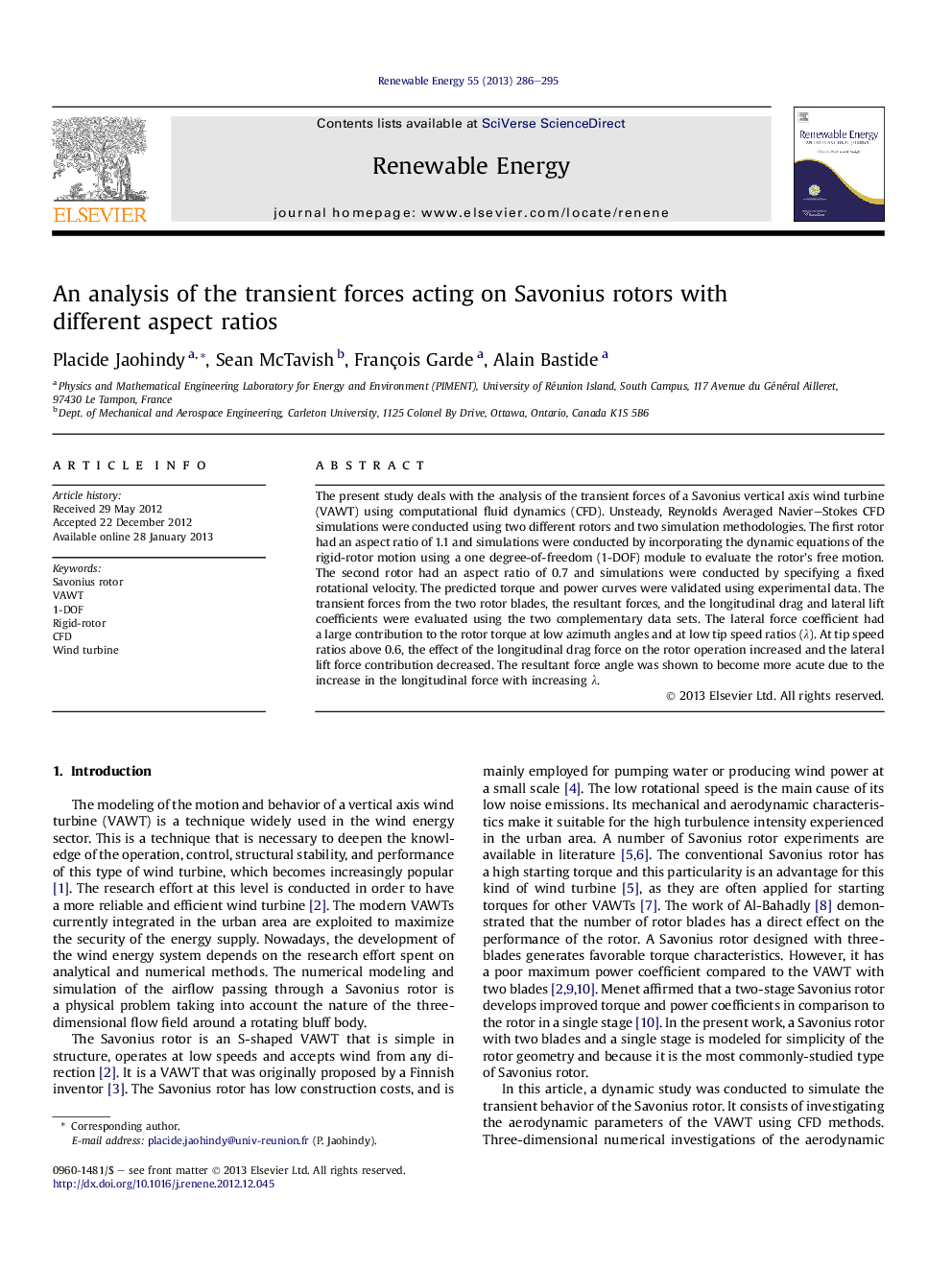| Article ID | Journal | Published Year | Pages | File Type |
|---|---|---|---|---|
| 300563 | Renewable Energy | 2013 | 10 Pages |
The present study deals with the analysis of the transient forces of a Savonius vertical axis wind turbine (VAWT) using computational fluid dynamics (CFD). Unsteady, Reynolds Averaged Navier–Stokes CFD simulations were conducted using two different rotors and two simulation methodologies. The first rotor had an aspect ratio of 1.1 and simulations were conducted by incorporating the dynamic equations of the rigid-rotor motion using a one degree-of-freedom (1-DOF) module to evaluate the rotor's free motion. The second rotor had an aspect ratio of 0.7 and simulations were conducted by specifying a fixed rotational velocity. The predicted torque and power curves were validated using experimental data. The transient forces from the two rotor blades, the resultant forces, and the longitudinal drag and lateral lift coefficients were evaluated using the two complementary data sets. The lateral force coefficient had a large contribution to the rotor torque at low azimuth angles and at low tip speed ratios (λ). At tip speed ratios above 0.6, the effect of the longitudinal drag force on the rotor operation increased and the lateral lift force contribution decreased. The resultant force angle was shown to become more acute due to the increase in the longitudinal force with increasing λ.
► The forces acting on the rotors were evaluated using computational fluid dynamics. ► The simulations were validated using data from two separate experiments. ► The contributions of the lateral lift and the longitudinal drag forces were assessed. ► The torque generated is a combination of lateral lift and longitudinal drag forces. ► When the tip speed ratio increases, the rotor torque decreases.
